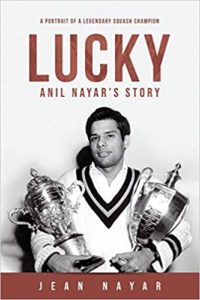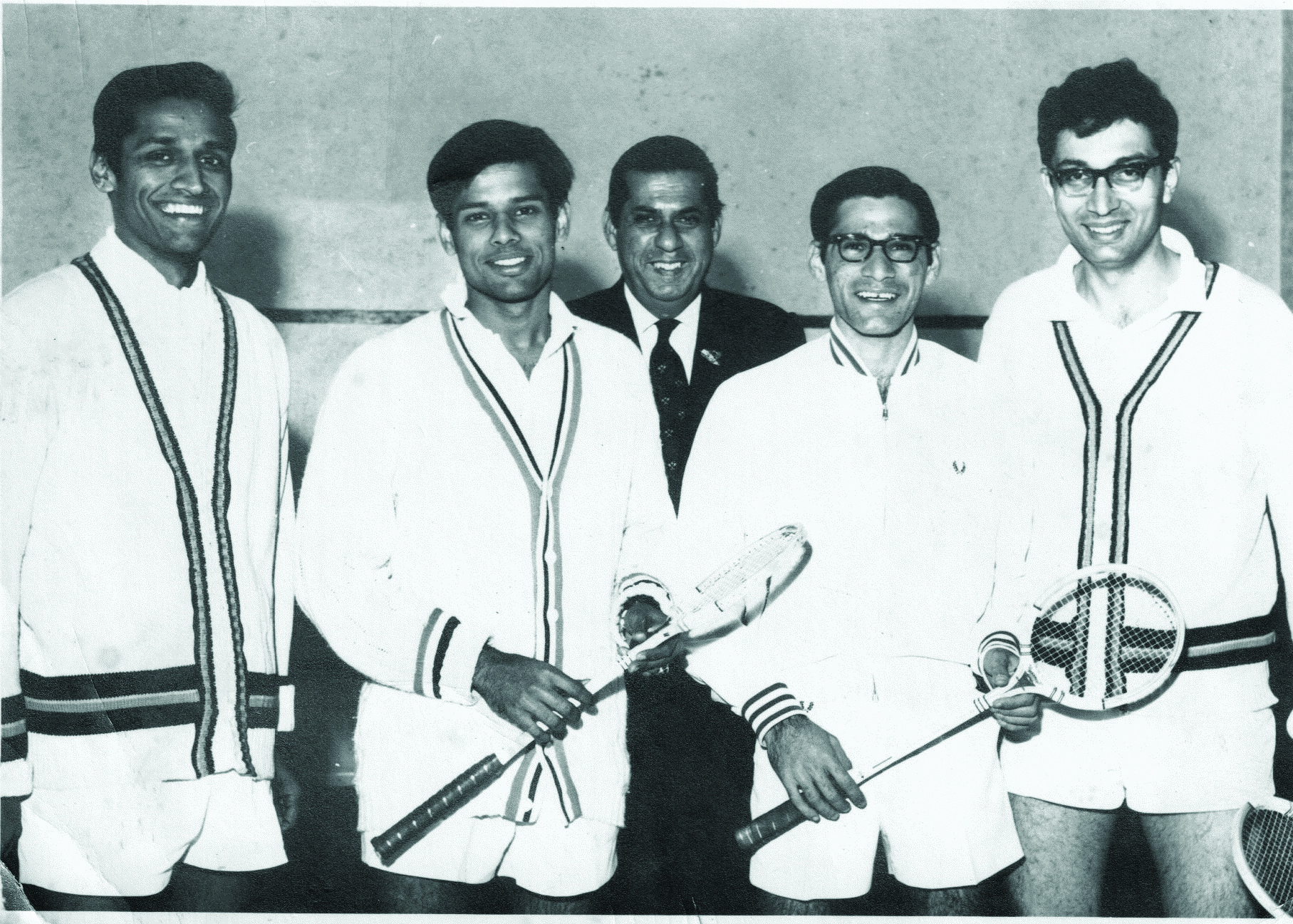Lucky: Anil Nayar’s Story—A Portrait of a Legendary Squash Champion
By Jean Nayar
(New York: Five Rivers Press, 2020).
By James Zug
Lucky is the biography of one of the top amateurs of the twentieth century. Anil Nayar and his wife Jean Nayar have put together a fascinating story of a great champion and symbol of diversity in the game.
This is a substantial book, well beyond a hagiographic sketch. Jean Nayar is a veteran journalist. She writes mostly about architecture, interior design, art, real estate and travel for lifestyle magazines and is the author of more than a dozen previous books. In putting together Lucky, she interviewed Anil’s family and friends, as well as more than forty fellow players and coaches, and she conducted in-depth background research. Jean also formally interviewed Anil, recording hours of his thoughts and memories. The book, stuffed with historic photographs, is a must-read.
Anil Nayar was born In October 1946 in a rural town in Punjab on the Grand Trunk Road. Less than a year after his birth, Anil witnessed Partition, the bloody creation of independent India and Pakistan, and his family, living about twenty miles from the new border of Pakistan, were one of the millions that fled the fighting. The Nayars moved to Bombay (now Mumbai), where Nayar, nicknamed Lucky, grew up. One of the joys of the book is learning more about life in Bombay in the 1950s and the complicated intersection of class, culture and family.
 As a child, Nayar picked up squash at the nearby Cricket Club of India. As luck would have it, just as he was getting going, a wonderful coach, Yusuf Khan, arrived at the club. Nayar rose up to become the best player in the country. In the spring of 1965 he flew to London to play in the British Junior Open, then with just one under-nineteen draw, the Drysdale Cup. After training at New Grampians with Jonah Barrington and Sharif Khan, Nayar, unseeded, inched through the draw at the Royal Automobile Club. In the semis he blew five match balls in the fourth game but recovered to win in five, and then he took the finals in three to become the first Indian to win what was the de factor world junior championship.
As a child, Nayar picked up squash at the nearby Cricket Club of India. As luck would have it, just as he was getting going, a wonderful coach, Yusuf Khan, arrived at the club. Nayar rose up to become the best player in the country. In the spring of 1965 he flew to London to play in the British Junior Open, then with just one under-nineteen draw, the Drysdale Cup. After training at New Grampians with Jonah Barrington and Sharif Khan, Nayar, unseeded, inched through the draw at the Royal Automobile Club. In the semis he blew five match balls in the fourth game but recovered to win in five, and then he took the finals in three to become the first Indian to win what was the de factor world junior championship.
Six months later he matriculated at Harvard, an improbable tale we recently told in Squash Magazine. Nayar’s adaptation to America is fascinating. A vitally important aspect of the book is the how Nayar bridged the U.S. and India. Whether living in a public housing project in an underserved Boston neighborhood in 1968 or helping manage the family textile business in Punjab or rescuing his mother who was staying in his apartment in Battery Park City on September 11th, 2001, Nayar gives a wonderfully insightful perspective.
Nayar went on to craft a superlative career on the squash court: winning the National Intercollegiates three times, leading Harvard to two national team titles, capturing two National Singles titles (the first non-white player to win an open U.S. national championship). Nayar also won the national titles of Canada and Mexico. Nayar moved back to India in 1972 and won the Indian national title eight times. When he returned to the States a decade later, he became a leading masters player, capturing seven national age-group titles (and losing in the finals a few other times). Nayar was also involved in one of the classic moments of sportsmanship in U.S. squash history, something he recently recounted in the squash podcast, Outside The Glass. In 2018 he was inducted into the U.S. Squash Hall of Fame.
In the fractured, partisan world of today, Lucky is urgently necessary.
Purchase Lucky on Amazon.


